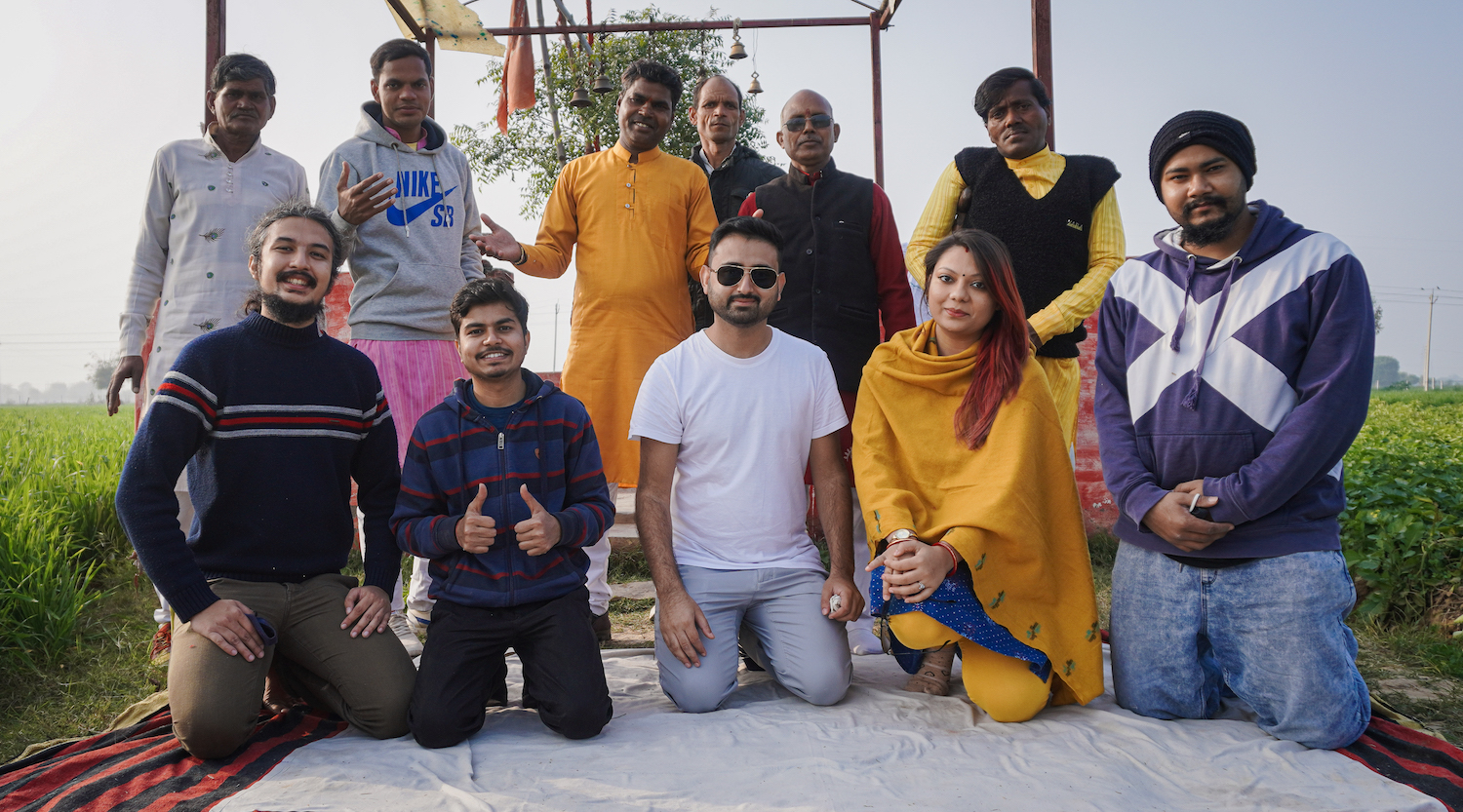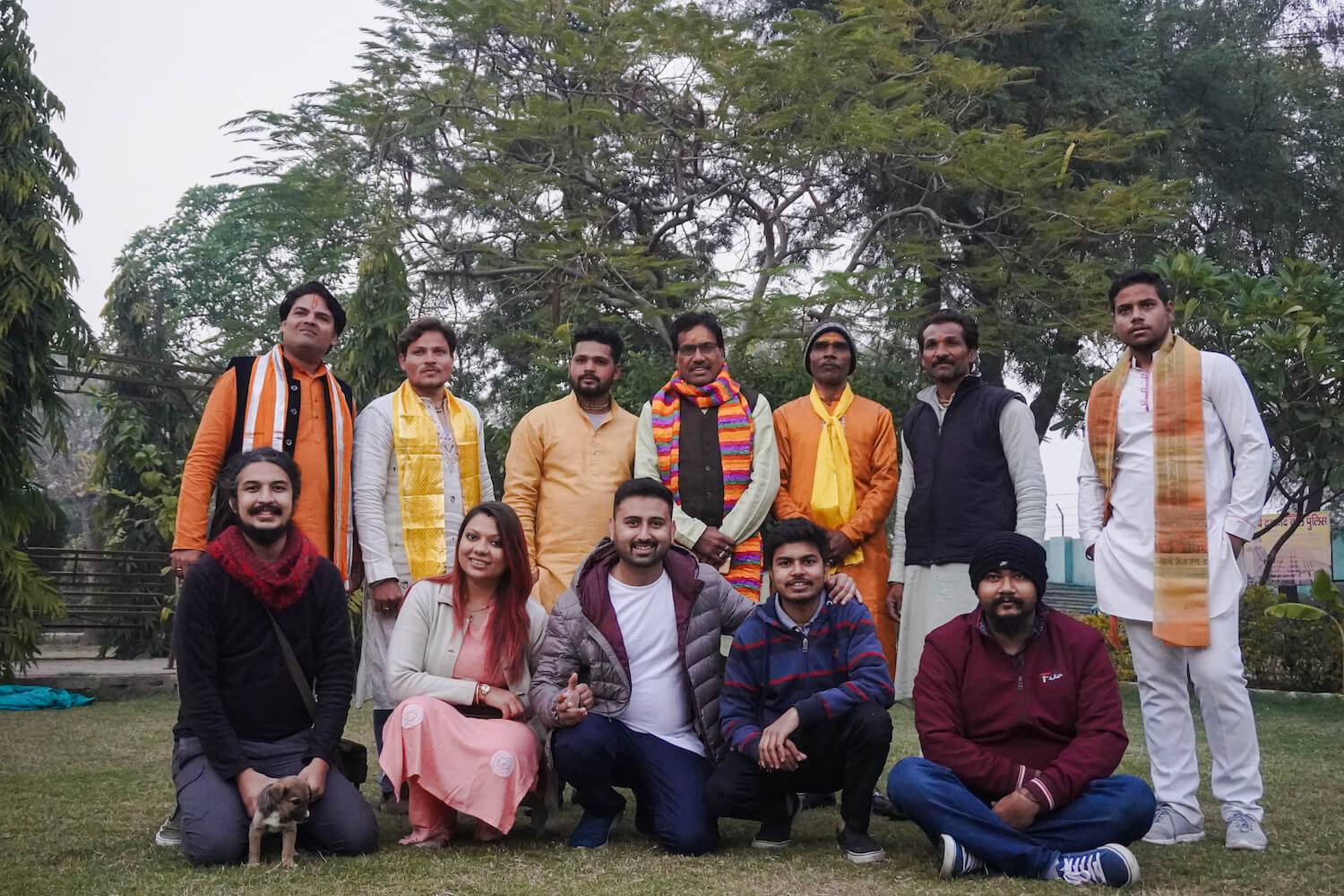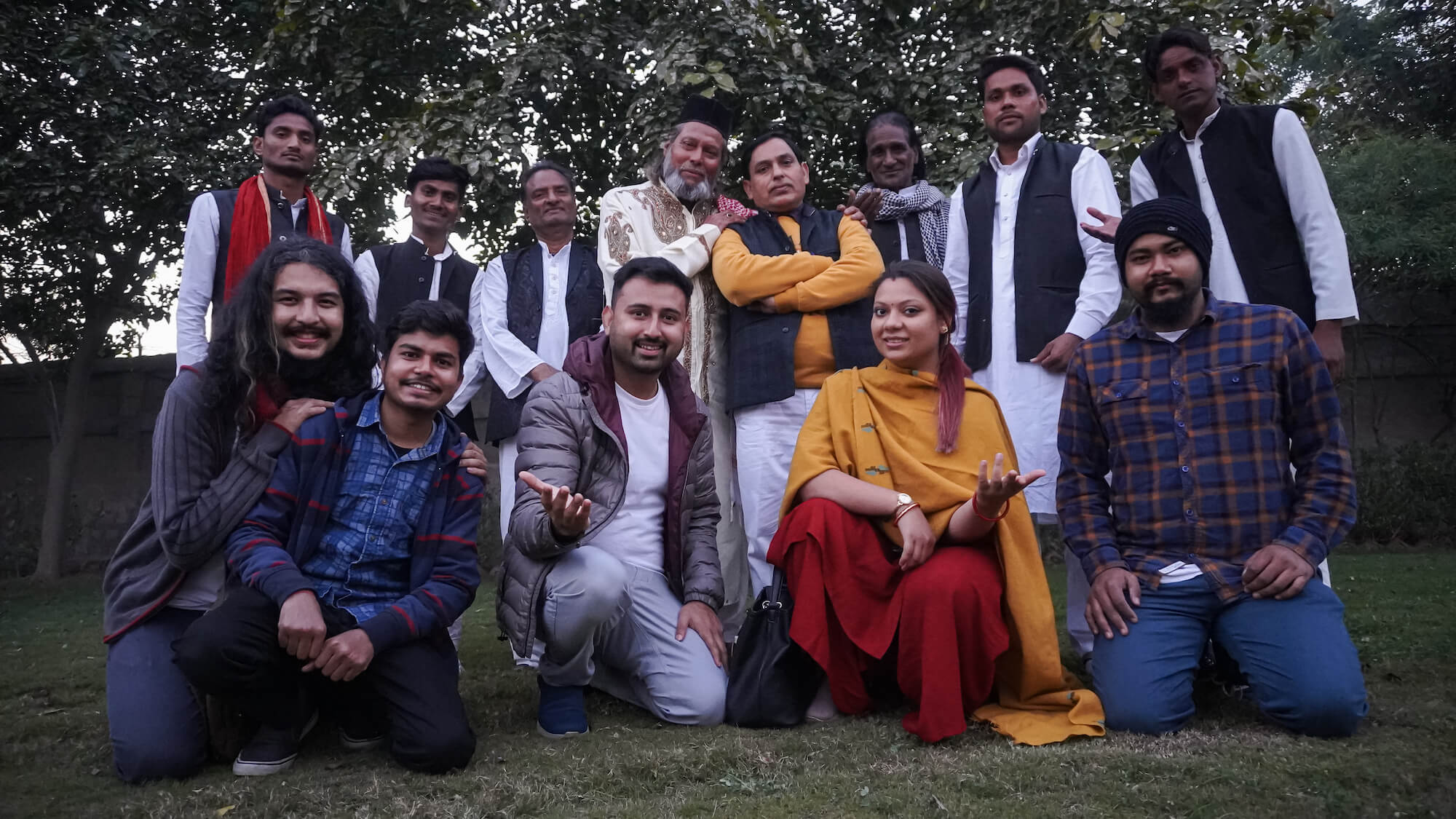
“Melodies of humility and enthusiasm.”
Uttar Pradesh is blessed to have the two major rivers Ganga and Yamuna, passing through the state, making it highly fertile and super viable for agriculture with intensive cultivation. To meet Tejpal, we reached a small village named Baad near Agra. The location for filming Tejpal Singh and his group was literally between a lush green agricultural field. As we reached the spot, we could see Tejpal and his group singing a Devi Geet in a small temple and couldn’t resist being a part of the Satsang.
Tejpal hails from Baad village of Agra district and has been a dedicated folk artist of the region. He has a senior diploma degree in vocals from NCZCC (North Central Zone Cultural Centre), Allahabad. Under the guidance of Shri Rajendra Prasad Sonariwale, he gained the wisdom of Braj folks. Tejpal was one of those artists who came from an initiative named Chaukhat ki Gunj, which was started during the lockdown to support the subsistence of local folk artists.
Meeting with him and the group was indeed an overwhelming and gratifying experience because, at the end of the day, all the hard work that the foundation puts in is solely to empower artists like Tejpal. They perform with all their heart but somehow, at times, fail to get attention. He is from a family of Jats and lives with his father, wife, and four children. He is an ever-smiling person, and his sweetness, as a human being, can be felt in the music. He belongs to the Agra Gharana.
Tejpal has a very dedicated group who look up to him with utmost fondness. Motiram, 52, is a Tabla Player and is trained by the prestigious Agra Gharana. He has done Prabhakar in tabla and has a senior diploma in vocals. Even though he has a classical background in music, he still considers himself to be a folk musician first.
His proficiency is in the folk music of Braj (Braj ke lokgeet). He was also very instrumental in nurturing the younger members of the group.
Gopal Singh, 22, a Dholak Player, is also a disciple of Motiram. He is still at a very nascent stage of his musical journey, but under the supervision of Tejpal and Motiram, he is improving his skills in no time. Omprakash, 49, who is a sweet maker by profession, plays the Jhinka for the group. Srinath, 48, gracefully plays the Matka with spoons, a very simple yet sweet instrument. Apart from matka, he also plays dholak at times. Kedar Sharma, 45, a carpenter by profession but a musician by heart. He admires Tejpal a lot and considers him to be his biggest influence and guru.
It is very overwhelming to see respect and admiration among the group members. Any group can move ahead when there is compassion between the members for their music, and, it is quite evident in this one. They leave the audience mesmerised with their performance on the songs like ‘ Banaye deyo naath’ –
“Tumne sabki dayi hai banaye,
(Hey! Lord, you have made everyone’s life)
Banaye deyo naath humari hai”
(Make our life too worthy)
The group is proficient in folk forms like Rasiya, Languriya, and Krishna bhajans. As a group, they have been performing for the last 20 years. Before the Covid 19 pandemic, they were getting 7-8 shows per month, but the earnings made out of it have never been sufficient to meet their family needs. They are always worried as to how they are going to sustain the living for themselves and their families, and hence many of their members are into other professions for a living. Despite the problems coming their way, they have never left the path of the following music in their lives. They have ardent faith in music. To them, the future looks scary, but they are pretty optimistic.
They believe in singing and presenting their music with a sense of authenticity in lyrics and music using their traditional instruments and have made appearances in all the cities like Bharatpur, Mathura, and Agra. The group performs in local festivals and fairs. It was for the first time that the group was recording their songs. This feeling of seeing the artists performing with such enthusiasm motivates us their joy and happiness is our biggest inspiration.







